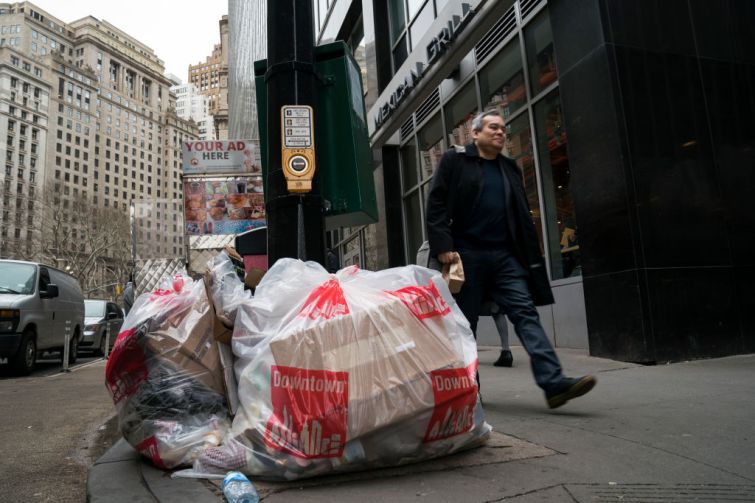NYC Pushes Containerized Trash — But Not in the Densest Parts of the City
By Rebecca Baird-Remba May 3, 2023 5:43 pm
reprints
The New York City Department of Sanitation wants on-street containers for trash, which would finally get the dreaded, leaking black trash bags off city sidewalks, but some of Manhattan’s densest neighborhoods may not qualify for the program, according to a report from the agency.
Roughly 80 percent of the city could be containerized easily, either with smaller wheeled bins or large stationary ones. The containers would occupy about 150,000 parking spaces, which is about 5 percent of the city’s 3 million parking spots, according to DSNY.
The containers are necessary not only to get trash off the sidewalks, but also to help consolidate it into a smaller footprint on the street. As an example, the report showed that a 21-unit, five-story building in Harlem could reduce its footprint to just four bins with shared containers instead of roughly 40 smaller ones.
But some of the densest parts of Manhattan, Brooklyn and Queens — about 11 percent of the city — may still have to deal with piles of black garbage bags, including the Midtown and Lower Manhattan office districts.
DSNY’s analysis finds that certain areas of Downtown Brooklyn, Brooklyn Heights, eastern Queens and the Upper East and Upper West Sides would be difficult to containerize because tall buildings produce more trash that could be held in containers.
The agency looked at whether it could address the problem by collecting trash six times a week, which would double the current collection schedule, but that amount of trash would still exceed the capacity of the containers. These blocks would also require containers on more than 50 percent of the street, meaning those areas may lose more street parking than their neighbors.
The sanitation department, for its part, said that it had not explored alternative trash storage for the neighborhoods and blocks that can’t use containers.
“The remaining 11 percent of residential streets produce a disproportionate volume of waste relative to available on-street area, and are even more challenging to containerize, even with aggressive collection frequency increases,” the report noted.
The report, which was first publicized by The New York Times, does not mention how much containerization would cost. However, DSNY is getting $5.6 million for a pilot program that would focus on 10 residential blocks and a dozen schools in Morningside Heights and West Harlem beginning this fall.
Rebecca Baird-Remba can be reached at rbairdremba@commercialobserver.com


